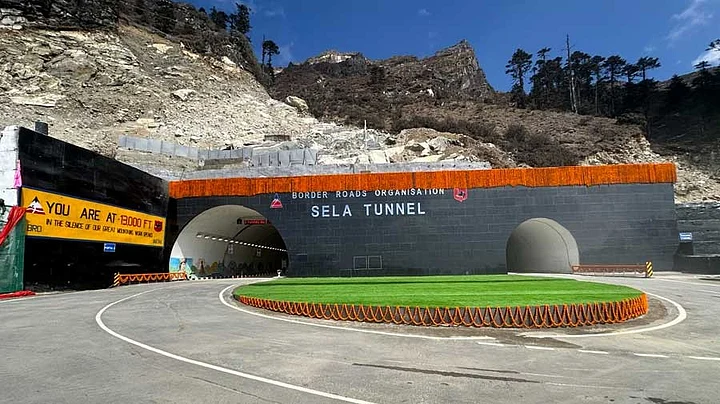In the recent war of words between India and China, the central point of contention is Arunachal Pradesh. China has continued to change the names of multiple places, and issue maps which show Arunachal Pradesh as part of a Chinese territory called Zangnan.
Recently, Beijing changed the names of 30 places including residential areas, mountains, rivers and lakes. However, the Indian response has been very clear and consistent. External Affairs Minister S Jaishankar asserted that “changing names will not do anything.”
The India foreign ministry spokesperson, Randhir Jaiswal, too reiterated, “Our position has been made very clear time and again. China may repeat its baseless claims as many times as they want. That is not going to change the position of India. Arunachal Pradesh was is and will always remain an integral and inalienable part of India.”
Even Rajnath Singh made statements underscoring that if India changed the names of Chinese places, they would not become Indian.
This is not the first time China has undertaken such steps. In August 2023, Beijing released maps highlighting Arunachal as part of Chinese territory.
The ongoing standoff and the failure of all the talks show that both sides are not keen to give in to the other's demands.
The root cause today is infrastructure.
The recent bout is rooted in the inauguration of the Sela Tunnel, an all-weather tunnel constructed at 13000 feet, which will boost the Indian capacity to move troops and goods faster. This will also be very crucial in a conflict situation in the region as it connects Dirang and Tawang.
The tunnel was inaugurated by the prime minister which drew an aggressive response from China. The Global Times quoted the Chinese Foreign Ministry spokesperson Wang Wenbin as saying, “India's relevant moves will only complicate the boundary question and disrupt the situation in the border areas between the two countries. China strongly deplores and firmly opposes the Indian leader's visit to the East Section of the China-India boundary. We have made solemn representations to India.”
China has continued to assert that India has illegally occupied Chinese territory by establishing the state of Arunachal Pradesh in 1987. As per a Chinese Foreign Ministry Spokesperson, “In 1987, India formed the so-called 'Arunachal Pradesh' on China's territory under India's illegal occupation. China issued a statement right then to firmly oppose it and stress that India's move was illegal. China's position remains unchanged.”
Both sides understand that infrastructure will be the defining factor in any future Indo-China conflict, especially in the border region. Even after years of discussions and negotiations, the unresolved border continues to dictate the direction of their relations. Beijing has continued to enjoy unparalleled infrastructure development on its side and wishes to maintain the advantage.
However, the development of critical infrastructure by India with the capacity to complement the boots on the ground is not palatable to China. Even though India is still playing catch up, it is steadily pushing towards closing the existing gap, challenging the Chinese advantage.
After all, India has assigned around 6000 crores for building 11 different projects in Arunachal Pradesh. In today’s conflict, quick movement of troops and equipment will be the deciding factor. In addition, the development of roads and bridges also helps in economic growth and development.
To make the issue further complicated, the support shown by the United States to India has irked the Chinese. The US State Department spokesperson Vedant Patel recently announced, “The United States recognises Arunachal Pradesh as Indian territory and we strongly oppose any unilateral attempts to advance territorial claims by incursions or encroachments, military or civilian, across the Line of Actual Control.”
The Chinese reasserted that “Zangnan is China's territory, a basic fact that is undeniable. The China-India boundary question is a matter between the two countries and has nothing to do with the US side.”
Even after 18 months, Beijing has still not appointed an Ambassador to India. This means that there is no immediate point of contact due to the absence of quick channels for communication. Such situations can exacerbate miscommunication.
Beijing's aggression underscores that China wants to resolve the issue on its own terms, and the rise of nationalism across the Line of Actual Control makes it difficult for both governments to adopt a conciliatory approach.
(Dr Gunjan Singh is Associate Professor at Jindal Law School, OP Jindal Global University. Her research interests are in the fields of Chinese Foreign Policy, China-South Asia Relations, Domestic Politics in China, Chinese Media, Mainland-Taiwan Relations and Space Security. This is an opinion piece and the views expressed are the author’s own. The Quint neither endorses nor is responsible for them.)
